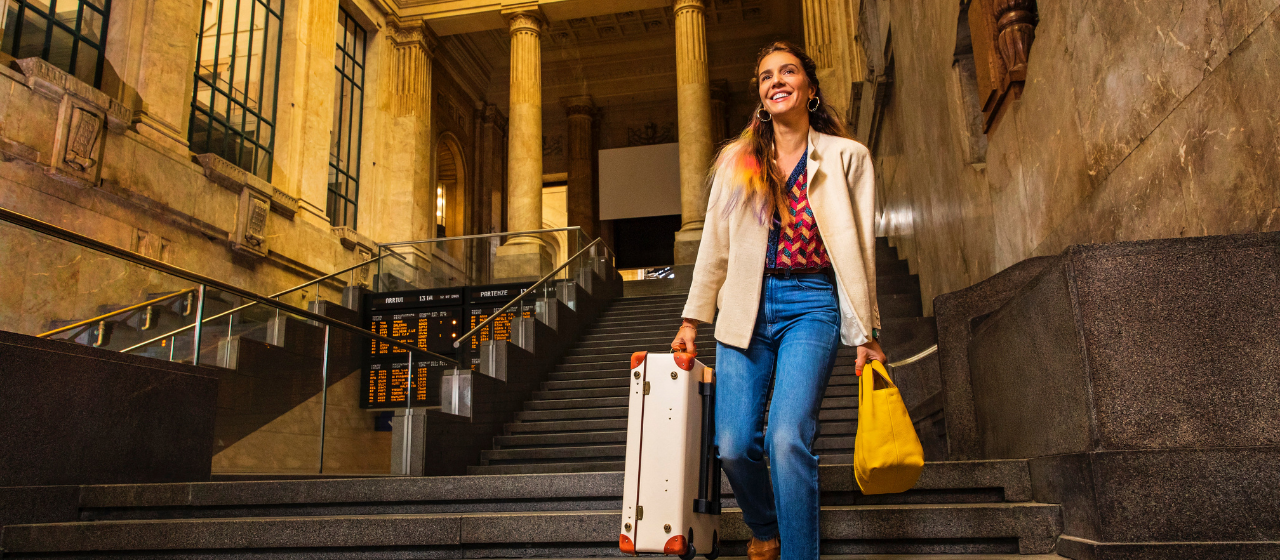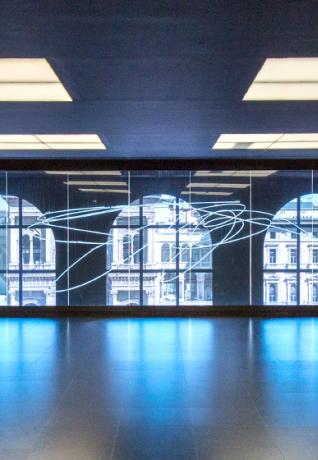Not in Milano
On the restart of the city, a new YesMilano international communication campaign

Business travel is a necessity but can also be a pleasure.
In Milano, it’s hard to know where business efficiency ends and sophisticated pleasure begins.
The city has world-class fair and congress facilities, but also a cosmopolitan lifestyle based on art, food, culture, making it your gateway to Italy and Europe.
Milano is Italy’s financial capital and knowledge powerhouse.
It is also a safe and secure city.
It has five distinctive assets that set it apart from the competition when it comes to organizing MICE events and have people flock to them.
The City of Milano is served by three major airports: Malpensa (MXP), Linate (LIN) and Orio al Serio (BGY), with nearly 1,300 weekly flights connecting Milano to the 27 EU capitals. Before the pandemic, there were 613 flights a week from Milano to non-EU destinations.
In 2018, Milano Linate and Milano Malpensa recorded more than 35 million of passengers and SEA (Milan Airport Authority) is among the top 10 airport operators in Europe.
High-speed trains connect Milano to all the major Italian and European cities. Milano Central Station is the city’s main hub for railway travel.
It takes 2 hours get to either Venice or Florence, or the Riviera, and 3 hours to get to Rome.
It takes 6 hours to reach Paris by TGV.
Other close EU destinations include Zurich, Geneva, Lausanne, Nice, Marseille, Munich, Frankfurt, and Vienna.
Other major railway stations are Garibaldi FS and Cadorna FN, the latter for suburban trains.
Milano and its hinterland are at the junction of three essential EU highway corridors, with road networks linking the main cities of Lombardy to the rest of Europe and the Italian Peninsula, e.g. the A1 tollway that descends from Milano to Bologna, Florence, Rome, and Naples.
A compact and flat city of 1.5 million (3.5 million with the whole metro area), Milano is easy to get around thanks to its fast, affordable and intermodal system of public transportation, its bike lanes and pedestrianized areas.
Milano has 4 metro lines of the subway (soon five, with the opening of the Linate-San Babila underground link), 12 suburban S lines (from Cadorna FN and Garibaldi FS stations), 17 tram routes (you can find Milanese trams in San Francisco!) and countless public buses, mostly electric or with natural gas engines.
It’s very easy to get a bicycle, a scooter, a moped or a car through a sharing app.
The city is leading the transition to green mobility and decarbonized living.
Faith in modernity and innovation, and rootedness in art, culture and history are the distinctive traits of this Northern Italian city with a Roman, Medieval, Renaissance, and Napoleonic past.
Duomo, Scala, Brera and the Last Supper are artistic treasures that simply have no comparisons.
Heritage does not mean faith in tradition, quite the opposite, since Milano capitalizes on its art, music and literature to feed a thriving media and publishing ecosystem.
In 1899, political scientist Gaetano Salvemini famously observed that “What Milano thinks today, Italy will think tomorrow”.
An updated version of this dictum might be that what is conceived in Milano will soon been be appreciated in the rest of Europe.
In Milano, sociability means taking part in public life and engaging in cultural debate and social solidarity.
Networking and personal relations are extremely prized, and nurturing them is essential, be they at art vernissages or book presentations, international symposia or cultural events.
When they are not chatting on the phone, people in Milano love to converse with a drink in their hand, like a Spritz before dinner and a Negroni when the night falls.
But since they are seldom idle, the Milanese often turn these recreational moments into opportunities for entrepreneurial and intellectual creation.
Paris and New York have equal levels of taste and creativity, but Milano literally breathes fashion and design in all its districts.
Over the last decade, it has become a reference for contemporary architecture thanks to the Porta Nuova and Tre Torri skyscrapers, and whole new parks and neighborhoods are being built in abandoned industrial areas, also in anticipation of the Winter Olympic Games of 2026, which Milano will jointly host with Cortina, Italy’s ritziest Alpine resort.
Every trip to Milano is enriched by top quality experiences and and high-end shopping.
Top quality artifacts and gourmet eating are everyday's must have.
The Montenapoleone fashion district near San Babila has the highest concentration of fashion brands in the world.
Milano’s stylists and designers are arbiters of international taste, in home and office interiors, for women’s and men’s fashion, in architecture and gastronomy.
Come and discover a cosmopolitan dimension where glamor and vibrancy, high and low culture mix every day!

 Log in
Log in


